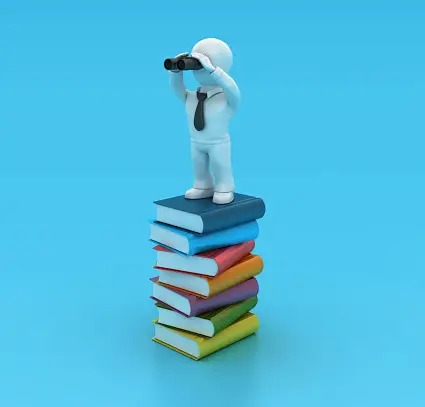Visual arts education plays a vital role in shaping the minds and perspectives of individuals, fostering creativity, critical thinking, and cultural understanding. In a world increasingly dominated by digital media and rapid technological advancements, the importance of visual arts education cannot be overstated. This comprehensive exploration aims to delve into the multifaceted aspects of visual arts education, including its historical context, benefits, challenges, and the evolving landscape in the 21st century.
What is visual arts education?
Visual arts education refers to the instruction and learning experiences that focus on visual arts, encompassing various forms such as drawing, painting, sculpture, photography, and digital media. This educational discipline fosters creativity, critical thinking, and aesthetic appreciation. It involves teaching fundamental artistic techniques, art history, and encouraging students to express themselves through visual means.
Visual arts education plays a crucial role in developing cognitive and motor skills, enhancing cultural awareness, and nurturing individual expression. Through hands-on activities, students explore their artistic potential, learn to analyze and interpret visual information, and gain a deeper understanding of the role of art in society.
Historical Context
The roots of visual arts education can be traced back to ancient civilizations where artistic expression was an integral part of societal rituals, ceremonies, and everyday life. From cave paintings to ancient sculptures, art has served as a medium for communication and cultural preservation. As civilizations evolved, so did the formalization of art education, with ancient Greece being a notable example. The Renaissance marked a significant period in the history of art education, as artists like Leonardo da Vinci and Michelangelo emphasized the importance of formal training in the arts.
The 19th and 20th centuries witnessed the establishment of art academies and institutions dedicated to nurturing artistic talent. Movements like Bauhaus in Germany and the Arts and Crafts movement in England influenced the way art was taught and perceived. In the 21st century, visual arts education continues to evolve, embracing new technologies and interdisciplinary approaches.
How is education in the arts divided?
Art education is divided into 14 areas of knowledge and learning:
- The visual arts
- The drawing
- The painting
- The sculpture
- Engraving
- The ceramic
- Architecture
- Design
- Advertising
- Photography
- Infographic
- Cinema
- Aesthetic education (dance, theater, music, and poetry)
- Self-expression
Benefits of Visual Arts Education
- Creativity and Innovation: Visual arts education fosters creativity by encouraging students to think outside conventional boundaries. The process of creating art allows individuals to explore their imagination, experiment with different materials, and develop innovative problem-solving skills.
- Critical Thinking and Analysis: Analyzing visual artworks involves interpretation, evaluation, and critical thinking. Students engaged in visual arts education learn to analyze visual information, make informed judgments, and articulate their viewpoints. These skills are transferable to various aspects of life, including academic pursuits and professional endeavors.
- Cultural Understanding and Diversity: Visual arts provide a powerful means of understanding and appreciating diverse cultures. Through the study of art from different regions and historical periods, students gain insights into the values, beliefs, and experiences of various societies. This fosters cultural empathy and global awareness.
- Communication Skills: Art is a form of visual language, and through visual arts education, students learn to communicate ideas, emotions, and narratives visually. This enhances their ability to express themselves effectively and understand the communicative power of visual elements.
- Personal Development: Engaging in the creative process can be a deeply personal and introspective experience. Visual arts education contributes to personal development by fostering self-awareness, resilience, and a sense of accomplishment. It provides a space for individuals to explore and express their identity.
Challenges in Visual Arts Education
Despite its numerous benefits, visual arts education faces several challenges in contemporary educational settings.
- Limited Resources: Many schools struggle with limited resources for art programs. Insufficient funding for materials, equipment, and qualified art teachers can hinder the quality of visual arts education.
- Standardized Testing Pressure: The emphasis on standardized testing in education often sidelines subjects like art. Schools may prioritize subjects that are directly assessed through standardized tests, leaving little room for comprehensive visual arts education.
- Lack of Teacher Training: Not all educators receive adequate training in visual arts instruction. The effectiveness of visual arts education depends significantly on the competence and enthusiasm of the teachers. Insufficient training can result in a lack of engagement and uninspiring art lessons.
- Technology Integration: While technology offers new avenues for artistic expression, not all schools have the resources or expertise to integrate digital tools into their art curriculum. The digital divide can create disparities in students’ access to innovative art education.
- Perceived Non-Essential Nature: In a utilitarian view of education, some argue that visual arts are non-essential compared to subjects deemed more directly applicable to future careers. This perspective overlooks the holistic benefits that visual arts bring to cognitive, emotional, and social development.
The Evolving Landscape
In the 21st century, visual arts education is undergoing a transformation driven by technological advancements, changing societal values, and a growing recognition of the importance of creativity in various fields. Here are some notable trends shaping the evolving landscape of visual arts education:
- Digital Arts and Technology Integration: The integration of digital arts and technology has expanded the possibilities of artistic expression. Students now have access to tools like digital drawing tablets, 3D printers, and virtual reality, opening new avenues for creativity and skill development.
- Interdisciplinary Approaches: Visual arts education increasingly embraces interdisciplinary approaches, connecting art with other subjects such as science, technology, engineering, and mathematics (STEM). This integration reflects a broader understanding of the interconnectedness of knowledge and skills.
- Online and Remote Learning: The rise of online education has also impacted visual arts education. Digital platforms provide opportunities for remote learning, enabling students to access art education resources and collaborate with peers globally.
- Focus on Inclusivity and Diversity: There is a growing emphasis on making visual arts education more inclusive and diverse. Efforts are being made to incorporate diverse voices, perspectives, and artistic traditions into the curriculum to reflect the richness of global cultures.
- Community Engagement and Public Art: Visual arts education is extending beyond the classroom, with an increased focus on community engagement and public art projects. This approach not only enhances students’ understanding of the societal impact of art but also contributes to community development.
Careers related to the visual arts
Degree in Communication Sciences
Audiovisual communication is an important part of this career, so it is related to the visual arts. It implies a great capacity to transmit messages efficiently and creatively, whose main objective is to study, analyze and discuss the phenomena related to the transmission of information and at the same time study the way in which people carry out our communicative process.
Production and animation
Professionals who study this career learn to generate an animated product, so part of creating the characters, they go through the process of drawing, taking photos and videos. However, they also rely on new technologies to direct professional productions and the creation of audiovisual materials.
Degree in Graphic Design
It is also called visual communication, its objective is to create and transmit messages through images by combining text and images that reinforce and make a message clearer.
You learn topics related to visual composition, aesthetics, creativity and the use of different tools and software that serve to transform ideas and messages into graphic pieces.
Why is the teacher’s role so important in supporting and facilitating visual arts experiences?
The role of a teacher in supporting and facilitating visual arts experiences is paramount, as it plays a crucial role in nurturing creativity, critical thinking, and personal development among students. Visual arts go beyond the mere act of creating aesthetically pleasing images; they serve as a powerful means of expression, allowing individuals to communicate thoughts, emotions, and ideas that may be challenging to convey through other mediums. Here are several reasons highlighting the significance of a teacher’s role in this context.
- Teachers act as guides and mentors, helping students explore various artistic techniques, mediums, and styles. They provide the necessary knowledge and skills, laying the foundation for students to develop their artistic voices. Through structured lessons and constructive feedback, teachers empower students to push their creative boundaries and refine their artistic abilities.
- The teacher serves as a source of inspiration and encouragement. By exposing students to the rich history of visual arts and the works of influential artists, teachers broaden their perspectives and ignite a passion for artistic exploration. Moreover, teachers foster a positive and supportive environment where students feel comfortable taking risks and expressing themselves authentically through their art.
- Additionally, the teacher’s role extends to promoting critical thinking and analytical skills. Visual arts require students to analyze, interpret, and make decisions about their creative choices. Teachers guide students in developing a critical eye, helping them understand the principles of design, composition, and aesthetics. This not only enhances their artistic abilities but also contributes to their overall cognitive development.
- Furthermore, teachers play a crucial role in integrating visual arts into a holistic educational experience. They connect art to other subjects, fostering interdisciplinary learning and demonstrating the interconnectedness of various forms of expression. This integration enhances students’ understanding of the world and encourages them to see art as a reflection of society, history, and culture.
Conclusion
Visual arts education remains a cornerstone in nurturing creativity, critical thinking, and cultural understanding. Despite facing challenges, the field is evolving to meet the demands of a dynamic and interconnected world. By acknowledging the intrinsic value of visual arts and addressing the barriers to its widespread integration into education, society can ensure that future generations continue to benefit from the transformative power of artistic expression.

